Go Up North to See a Great Gray Owl
Updated: Feb. 13, 2024
The great gray owl is the largest owl in North America, measuring over 2 foot tall! Find out where you can spot these elusive birds of prey.
On This Page
How to Identify a Great Gray Owl
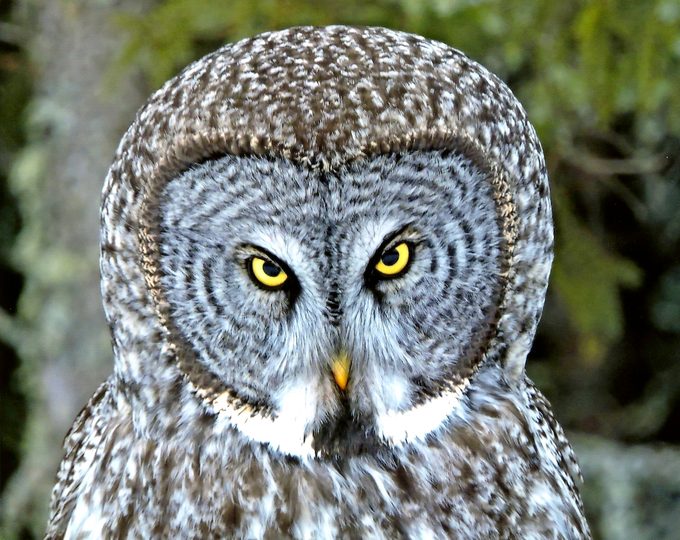
One of the most elusive and mysterious looking owls is the great gray. Despite being the largest type of owl in North America, the great gray is one of the most difficult to find.
Psst—follow these clues to spot the owl in your backyard trees.
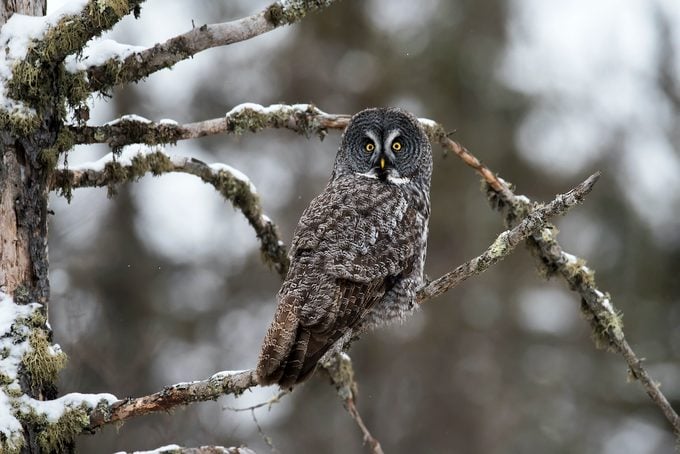
Great gray owls are easy to identify based on their large size, yellow eyes and a distinctive white bow tie mark under the chin.
Meet the smallest owl in the world—the elf owl.
Range and Habitat
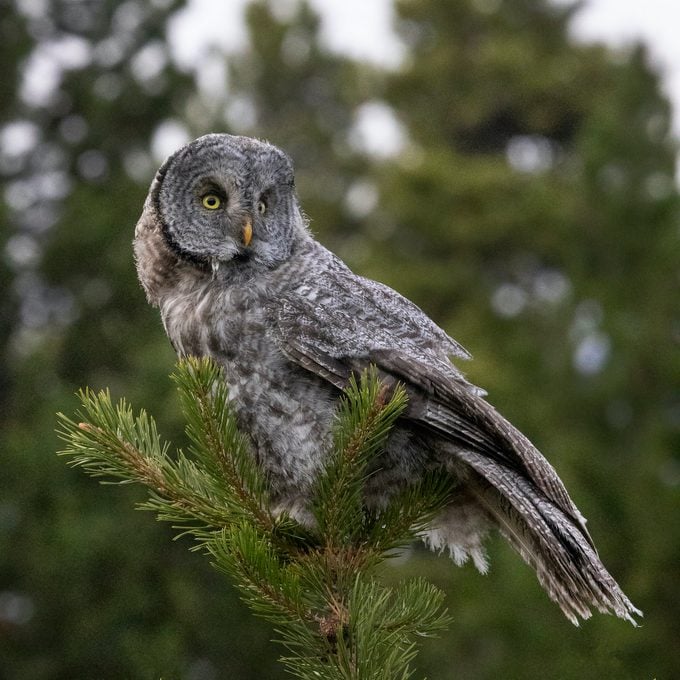
The species ranges across the forests of the West, in the mountains from California to Wyoming, as well as the boreal forest of Alaska and the western two-thirds of Canada. The more-than-2-foot-tall bird is perfectly camouflaged to reside in dense conifer forests.
Great gray owls rarely venture south, except when extreme cold forces them to seek food. Irruptions of this species only happen under the harshest of conditions.
Do owl sightings have special meaning?
Nesting Habits
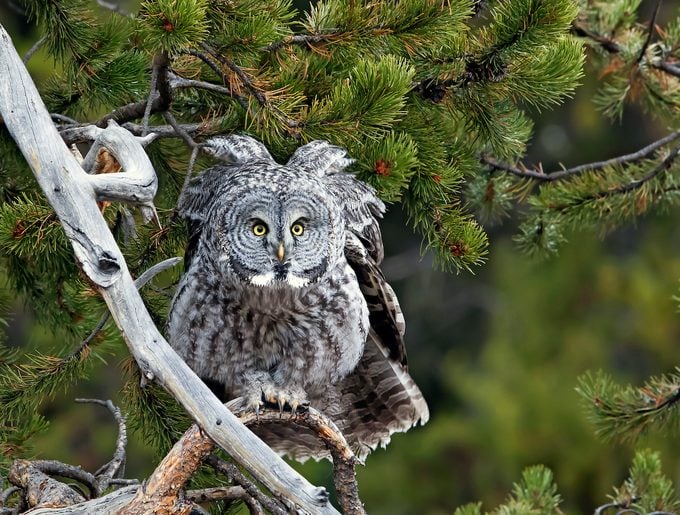
Rather than build their own nests, the giants take over structures built by squirrels, ravens or other raptors. Great grays will often return to the same nest year after year.
Great gray owls avoid populated areas, so they’re difficult to spot. But when caring for young, they’re more likely to venture out in daylight to hunt rodents.
Learn how to attract owls to nest in your yard.
Diet
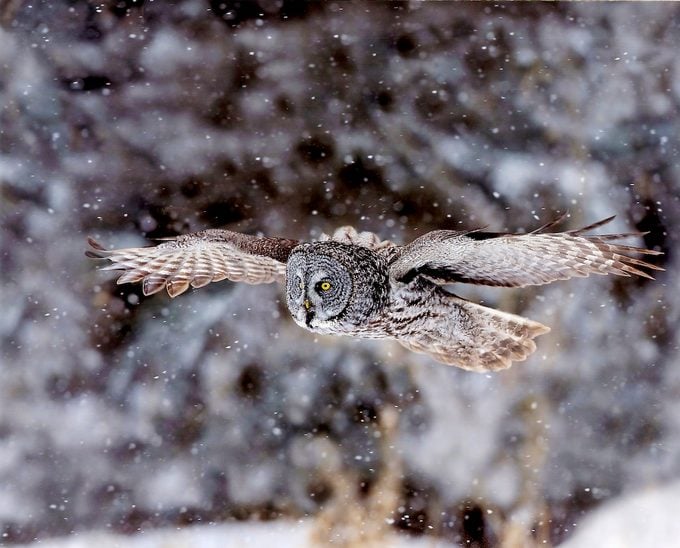
Great gray owls move out to open bogs, muskegs and meadows to hunt their small mammal prey. This owl is one of the mightiest and can plunge into deep snow to snag a vole snack. During winter, great gray owls consume up to seven rodents a day.
If you are lucky enough to see a great gray, resist the temptation to play calls or to feed it—both practices are unsafe for the owl. Instead, give the bird plenty of space. The memory will remain with you for forever.
Sounds
The Minnesota DNR reports that the great gray owl vocalizes with deep sounding, repetitive hoots.
Bird sounds courtesy of the Cornell Lab of Ornithology
Great Gray Owl Hotspot
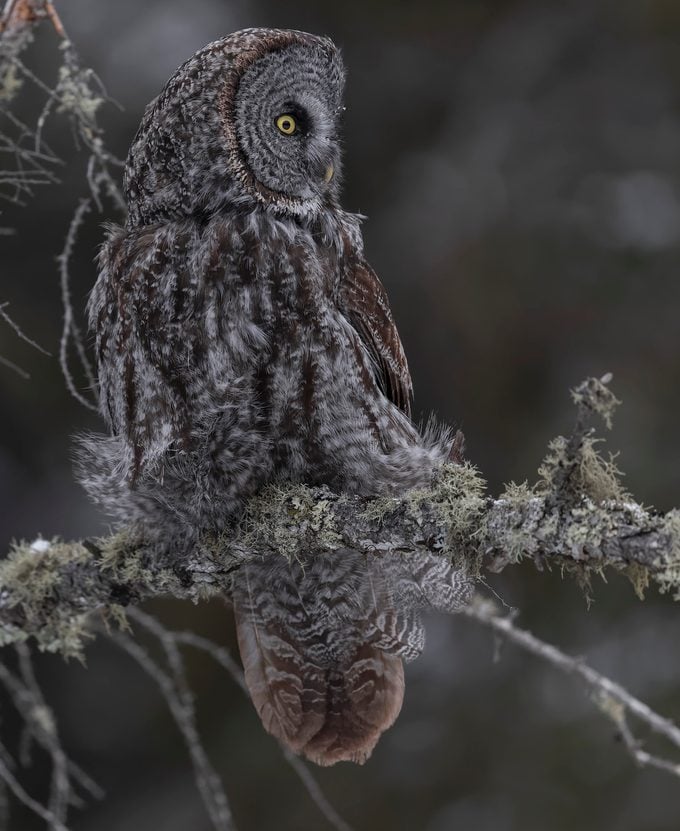
From December to March, Sax-Zim Bog in northern Minnesota becomes home to uncommon boreal birds from Canada.
“On a cold winter’s day in Sax-Zim Bog, we spotted this great gray owl (above) hunting along a gravel road. It is amazing how good their hearing is. He kept turning his head from side to side listening for the sounds of a vole moving beneath the snow. After about 10 minutes or so, he dove towards the ground and pounced on his meal. The snow was about a foot deep, but that didn’t keep him from a successful hunt. I was using a Canon R5 and a 600 f4 to photograph him,” says reader Kevin Oneill.
Next, learn fascinating snowy owl facts (and where to find them!)
Sources
- Minnesota DNR
- Cornell Lab of Ornithology
Why Trust Us
For nearly 30 years, Birds & Blooms, a Trusted Media Brand, has been inspiring readers to have a lifelong love of birding, gardening and nature. We are the #1 bird and garden magazine in North America and a trusted online resource for over 15 million outdoor enthusiasts annually. Our library of thousands of informative articles and how-tos has been written by trusted journalists and fact-checked by bird and garden experts for accuracy. In addition to our staff of experienced gardeners and bird-watchers, we hire individuals who have years of education and hands-on experience with birding, bird feeding, gardening, butterflies, bugs and more. Learn more about Birds & Blooms, our field editor program, and our submission guidelines.





















